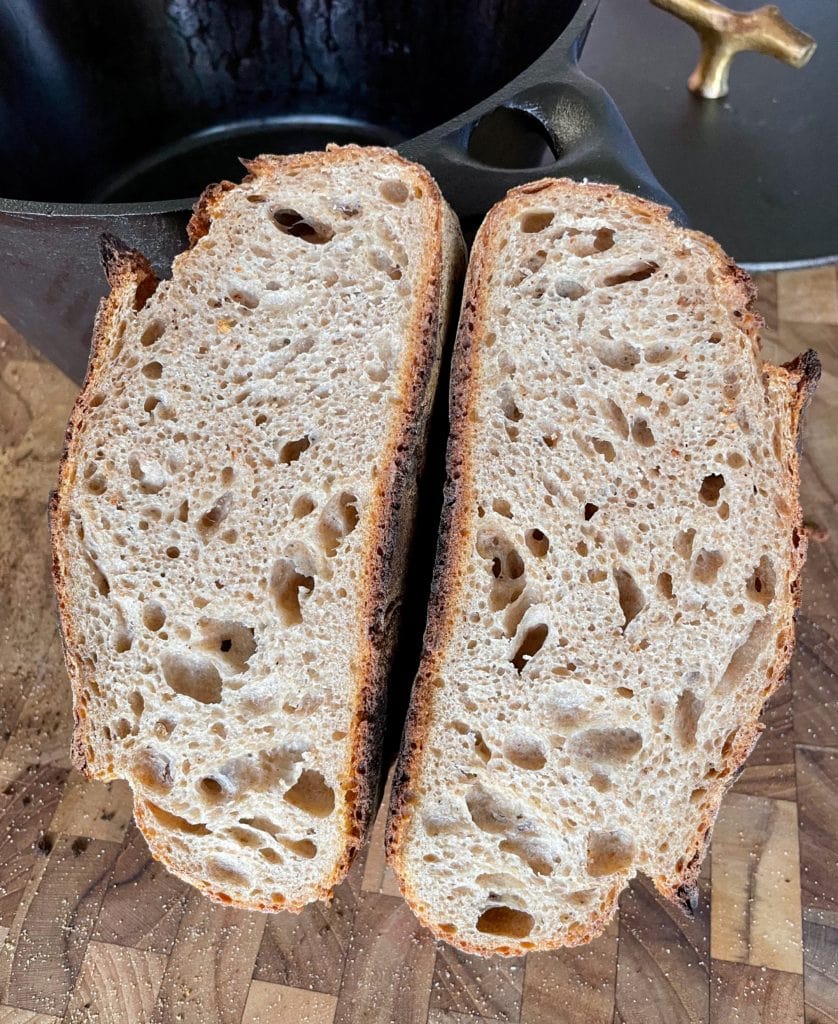Disclosure: this page may contain affiliate links, where I earn a commission (at no cost to you) if you decide to make a purchase. With that being said, I will only ever recommend products that I actually use and fully endorse.
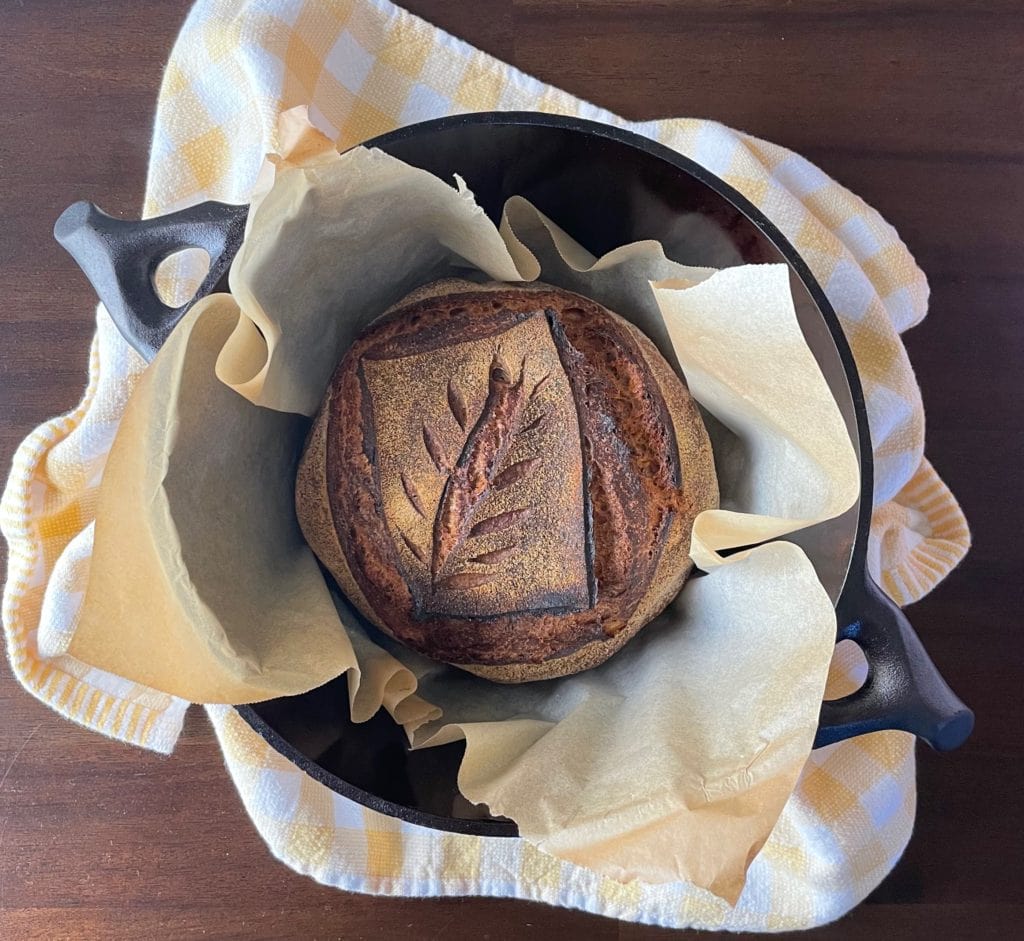
An easy, delicious, and wholesome whole wheat sourdough country loaf.
Making beautiful and delicious whole wheat sourdough bread at home does not need to be an arduous endeavor. By just mixing the ingredients and letting them sit you can create stunning loaves without the labor-intensive kneading that is usually required. The no-knead method used in this recipe is based on the one developed by Jim Lahey of the Sullivan Street Bakery in New York (for more no-knead recipes, check out his books here). Although this method does take longer, there is little hands-on activity and it is easily fit into a busy schedule.
If you are new to sourdough—or bread making in general—no-knead bread is a great place to start. And don’t get discouraged if your loaves are not perfect at first. This is a skill that, like any, requires practice. Once you get the hang of it you’ll be enjoying bakery-style loaves without having to leave the house.
Equipment and Ingredients
This whole wheat sourdough bread bakes in a Dutch oven to create the perfect crispy crust, so make sure you have one on hand. If you are shopping for a Dutch oven, take a look at Nest Homeware. They are offer a 3.5 qt cast iron Dutch oven that is both beautiful and highly functional. It is a great size for making loaves and is the one you will see in the pictures for this recipe. If you don’t have a Dutch oven, you can experiment with baking on a pizza stone, with a pan of boiling water in the oven.
This recipe also requires active sourdough starter. This means your starter should at least double 12 hours after being fed, and be used within 24 hours of feeding. Your starter may require more than one feeding prior to baking, so plan ahead.
Otherwise, it does not require any special equipment or ingredients. Some equipment can be helpful though. I highly recommend a kitchen scale for accurate measurements. Volumetric measurements are provided in this recipe, but be sure to sift and level appropriately for best results. Other tools you may find helpful are a proofing basket, bench scraper, and lame (a razor for scoring the bread). A quality serrated knife is also helpful when it comes time to cut the finished loaf. If you do not have one, the bread can be torn apart with your hands. This works best if you are serving it with soup or a saucy meal.
Suggested Recipes
Here are some recipes that will work great with this loaf:

50% Whole Wheat No-Knead Sourdough Bread
Ingredients
Standard Sized Loaf
- 20 grams (1 tbsp plus 1 tsp) active sourdough starter
- 320 grams (1⅓ cup) water
- 195 grams (1¼ cup) whole wheat flour
- 189 grams (1⅓ cup) all-purpose or bread flour
- 9 grams (1½ tsp) fine salt
Smaller Sized Load
- 15 grams (1 tbsp) active sourdough starter
- 240 grams (1 cup) water
- 156 grams (1 cup) whole wheat flour
- 142 grams (1 cup) all-purpose or bread flour
- 6 grams (1 tsp) fine salt
Options
- rice flour or wheat bran for dusting proofing basket
Instructions
- In a small bowl whisk together starter and water until starter has dissolved and mixture is bubbly.
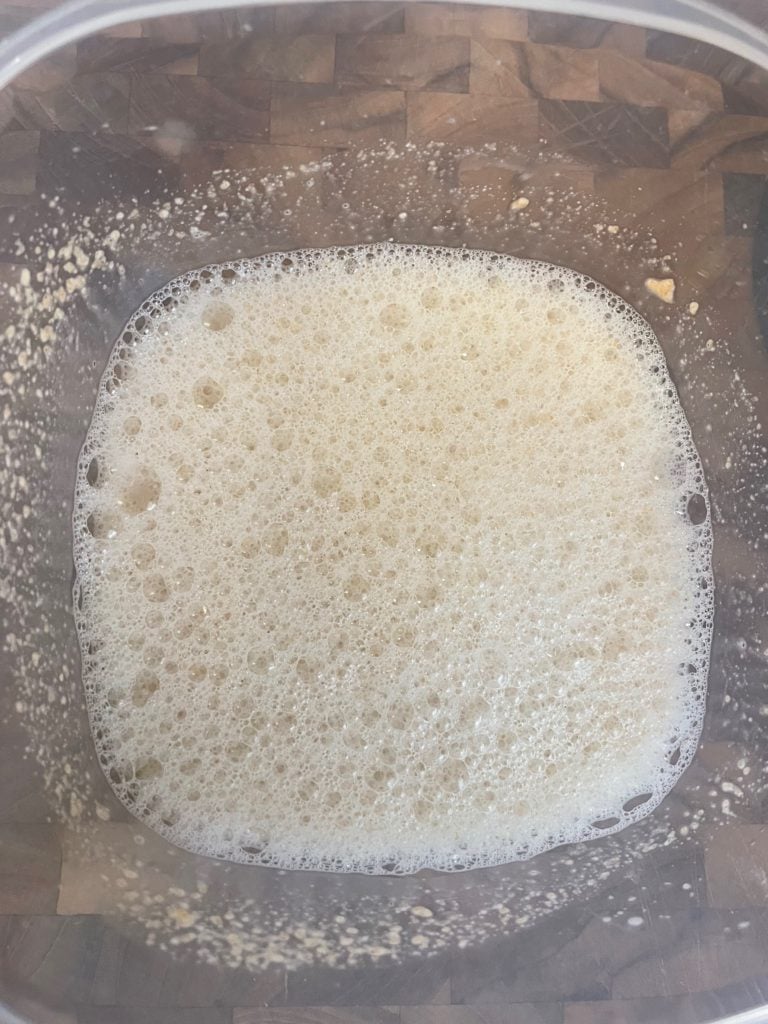
- In a large clear bowl or container whisk together flours and salt. Add dissolved starter to dry ingredients and mix quickly to form a shaggy dough. Avoid over-mixing and stop once no dry bits remain. Cover with a towel and let sit for 20–30 minutes.
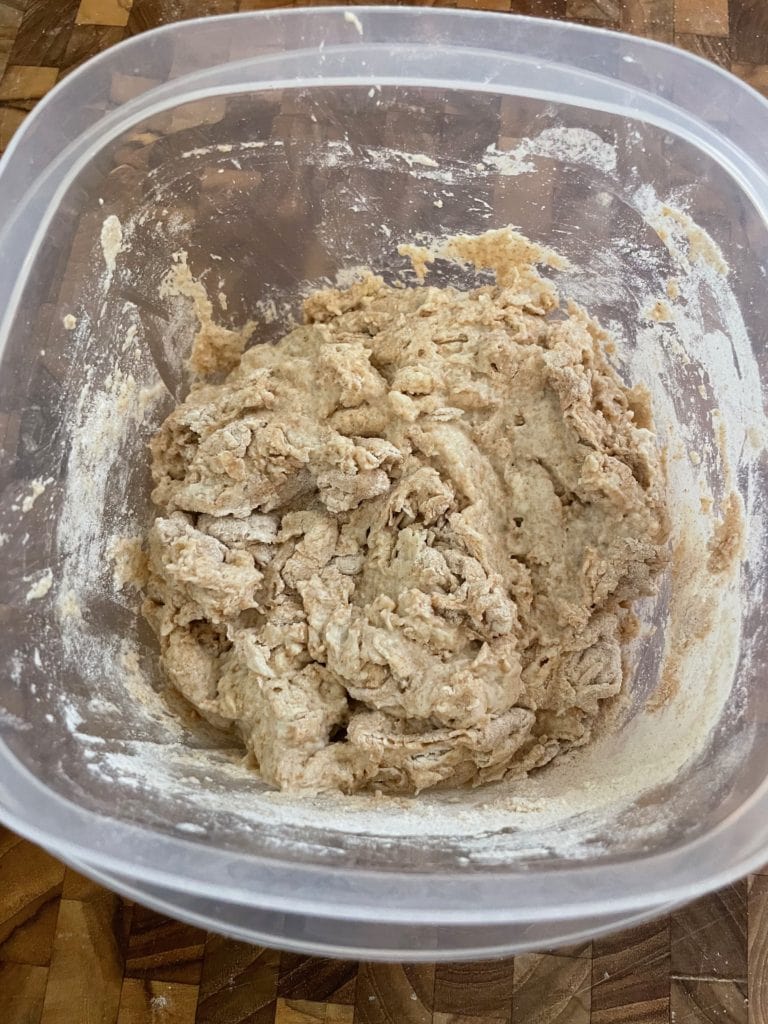
- Wet your hands and reach under the dough. Grab one side of the dough and gently stretch and fold it over the other side of the dough. Quarter turn your container and repeat until you have folded dough four times. The mixture should transform from a shaggy mass into a smoother, more cohesive dough. Mark the position of the top of the dough on the side of the container with a washable marker or rubber band. Cover with a towel.

- Leave dough to rise at room temperature until it has increased in volume by about 50–100%. This can take around 6–12 hours depending on the ambient temperature and the strength of your starter. If room temperature is below 70°F (21°C) consider proofing in an empty oven with the light on (but leave yourself a note so you don’t accidentally heat the oven while it is in there).
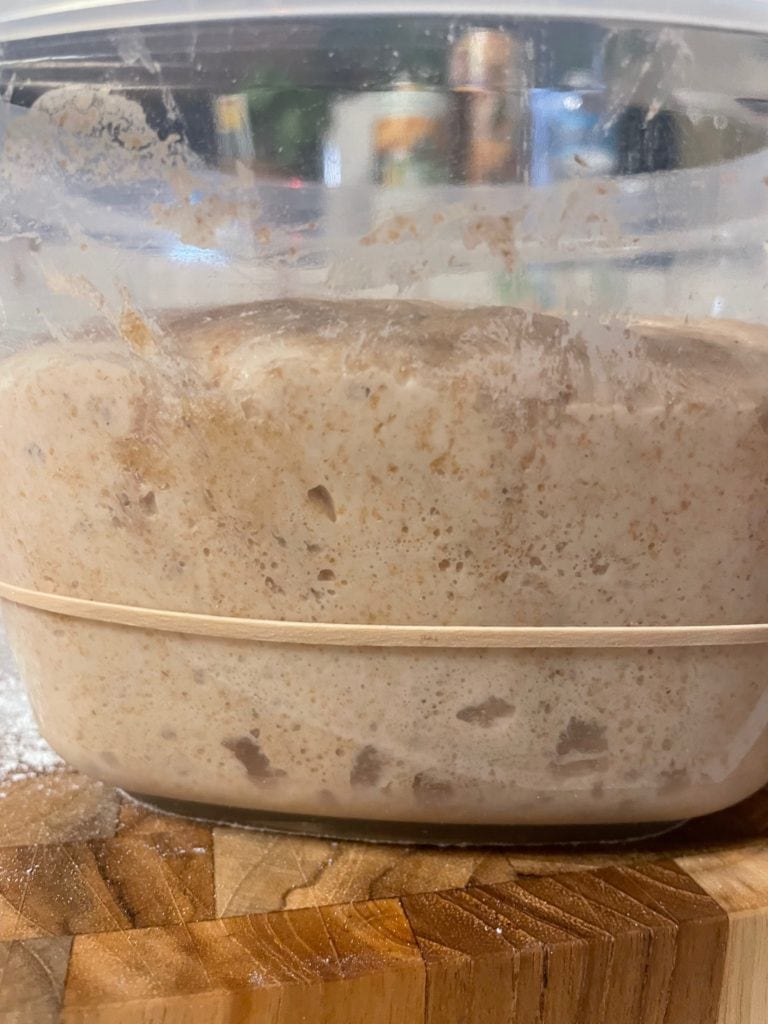
- Fill a small bowl with water and use it to wet your hands. Release dough from the sides of the container and transfer to a lightly floured work surface. Gently stretch the dough into a rough square about 5×5-inches. Wet hands as needed if dough is sticking. Fold each corner of the square into the middle. Cover with a towel and allow to rest for 15–20 minutes.
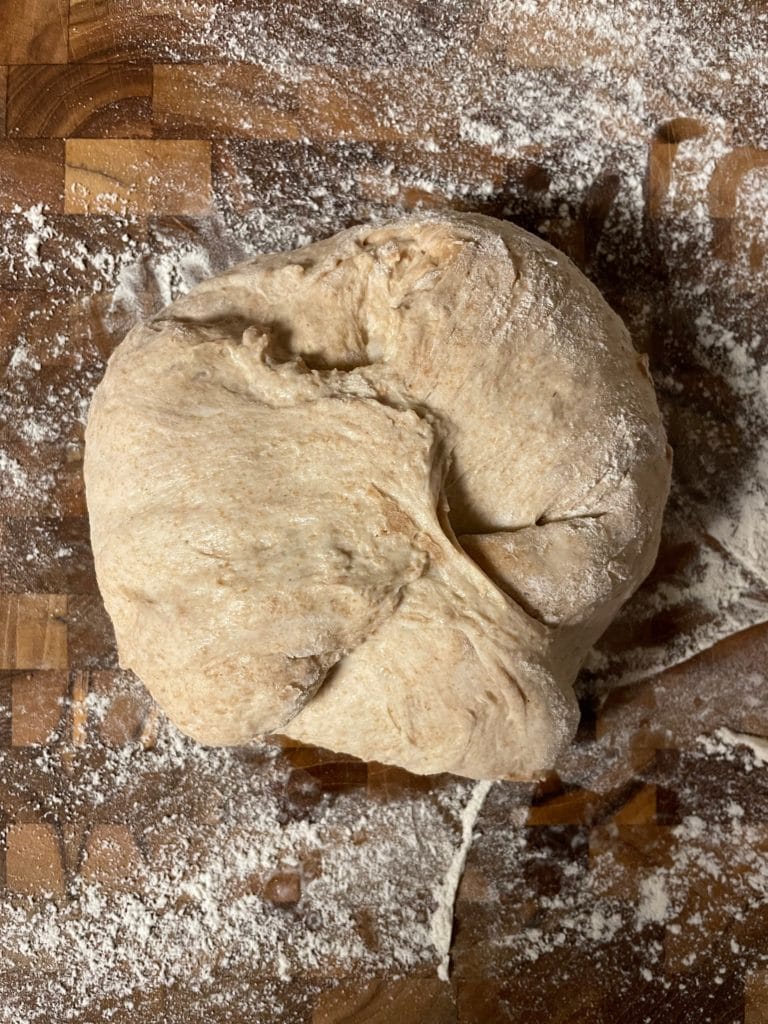
- Line a proofing basket or 8–10-inch bowl with a towel and dust with rice flour, wheat bran, or a heavy sprinkling of all-purpose or bread flour. Wet hands and again fold each corner of the dough into the middle. Repeat, folding the corners into the middle, as needed until dough is in a taut ball. Stop before dough starts tearing. Pinch the seems closed.
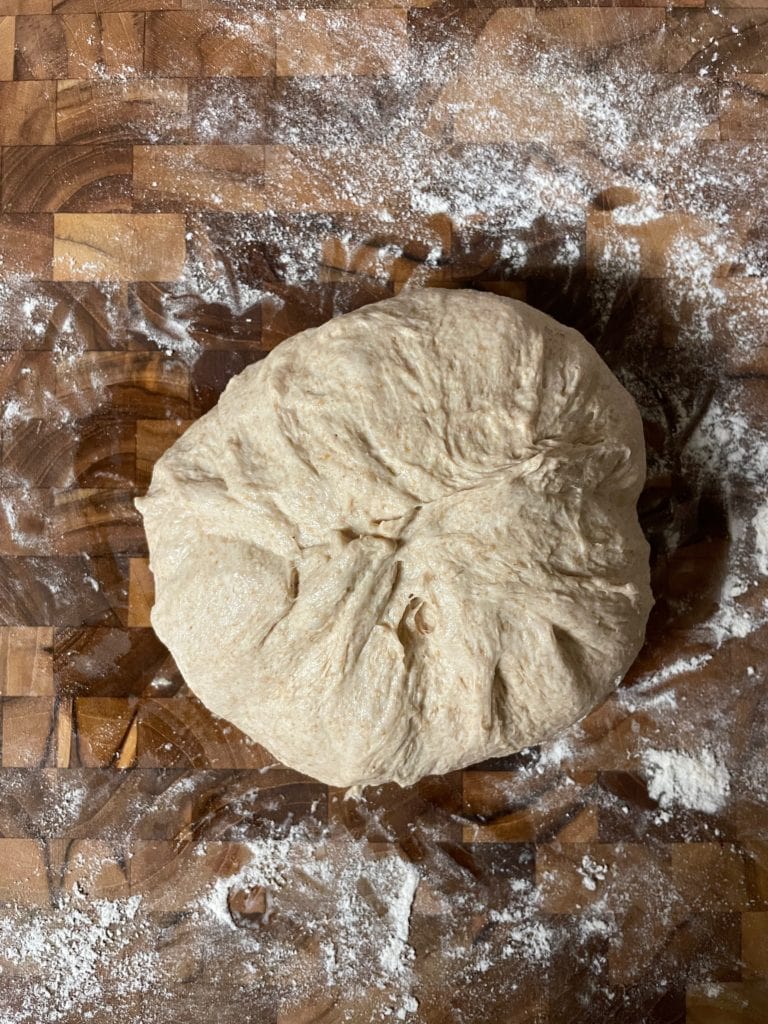
- Transfer dough to prepared basket or bowl seem-side-up. Dust the exposed side of dough with whatever you used to flour the basket. Cover with a towel. Transfer dough to the fridge and allow to proof for 12–24 hours (don’t anticipate the dough to noticeably grow when proofing in the fridge). Alternatively, you can proof at room temperature for about 2–4 hours, until dough has roughly doubled in volume. When done proofing a finger indent in the dough should spring back slowly.
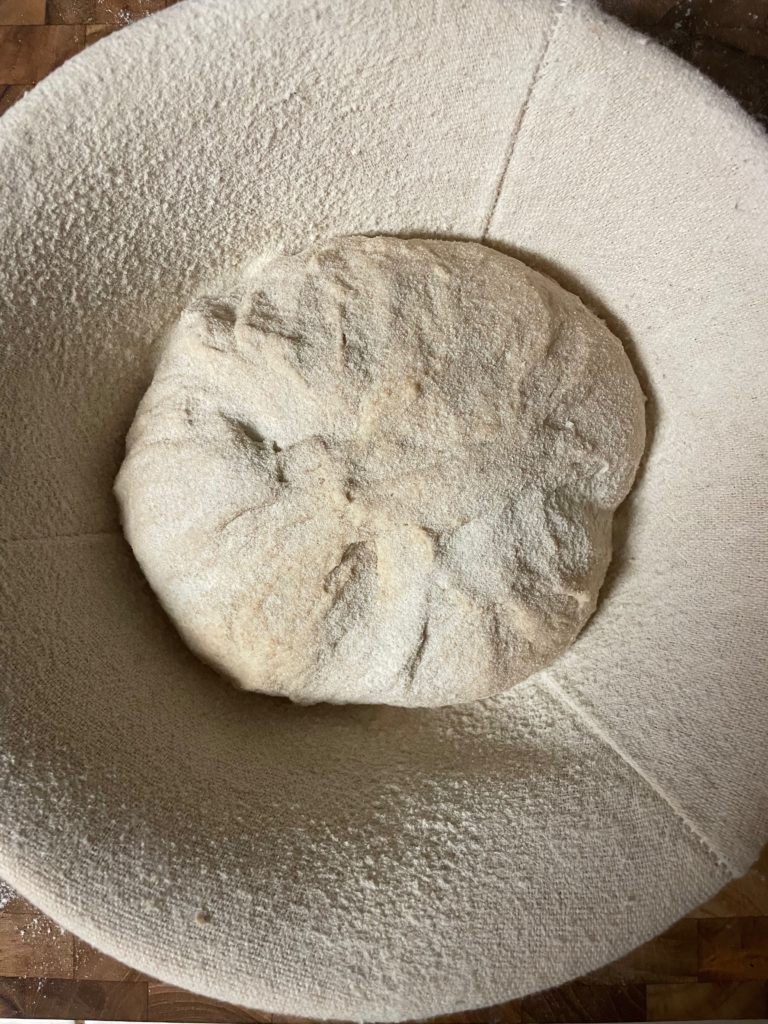
- An hour before you plan to bake place the pot and lid of a Dutch oven side-by-side on the middle rack of oven and preheat to 450°F (232°C). Once oven has preheated for about an hour prepare a square of parchment paper roughly 8×8-inches. Gently flip the dough onto parchment paper seem-side-down. Score the top of the loaf about ¼-inch deep with a serrated knife or razor blade. This can be a single slash, a cross, a square, or any pattern you like.
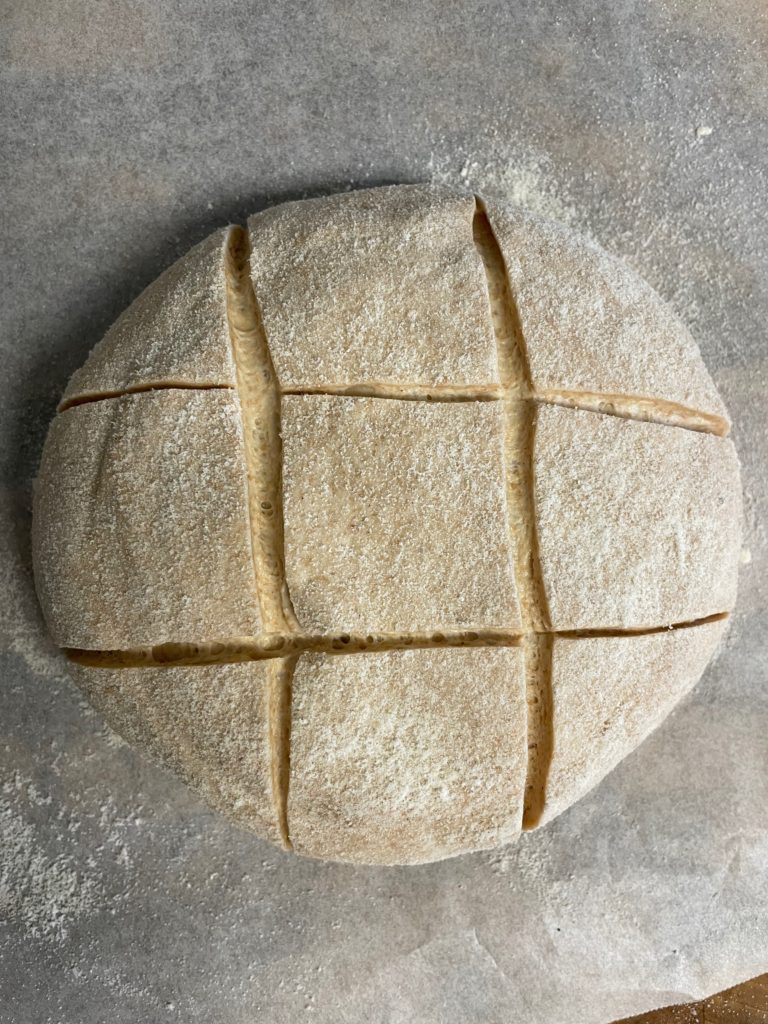
- Remove preheated pot and lid from the oven and carefully lower dough into the pot. Add an ice cube to the pot underneath parchment paper and cover with lid. Bake for 20 minutes then remove lid and bake for an additional 20-30 minutes (see recipe notes) or until loaf is deeply golden brown and sounds hollow when tapped on the bottom. Remove to a wire rack and cool completely—at least an hour—before cutting or tearing into your bread.
